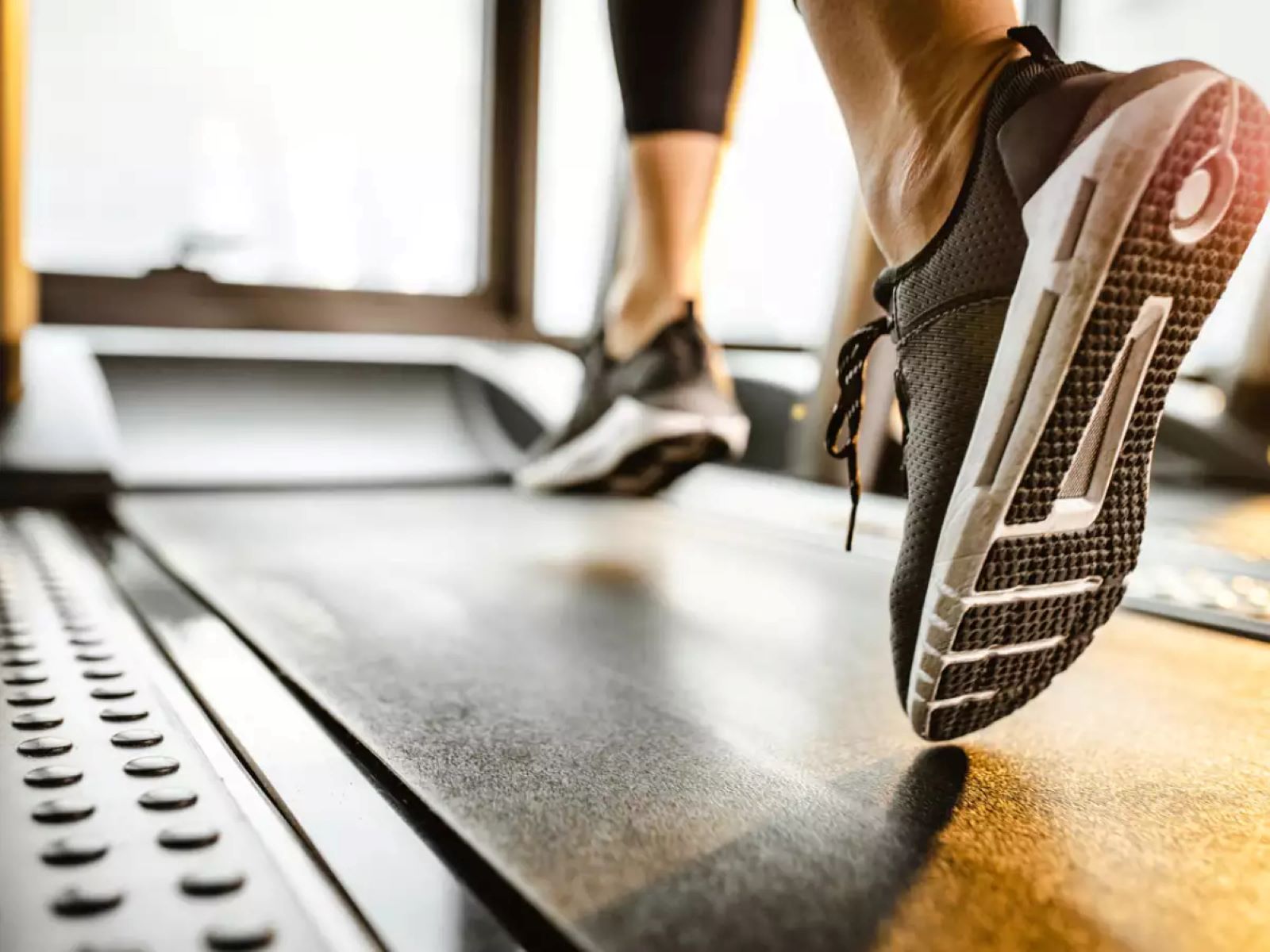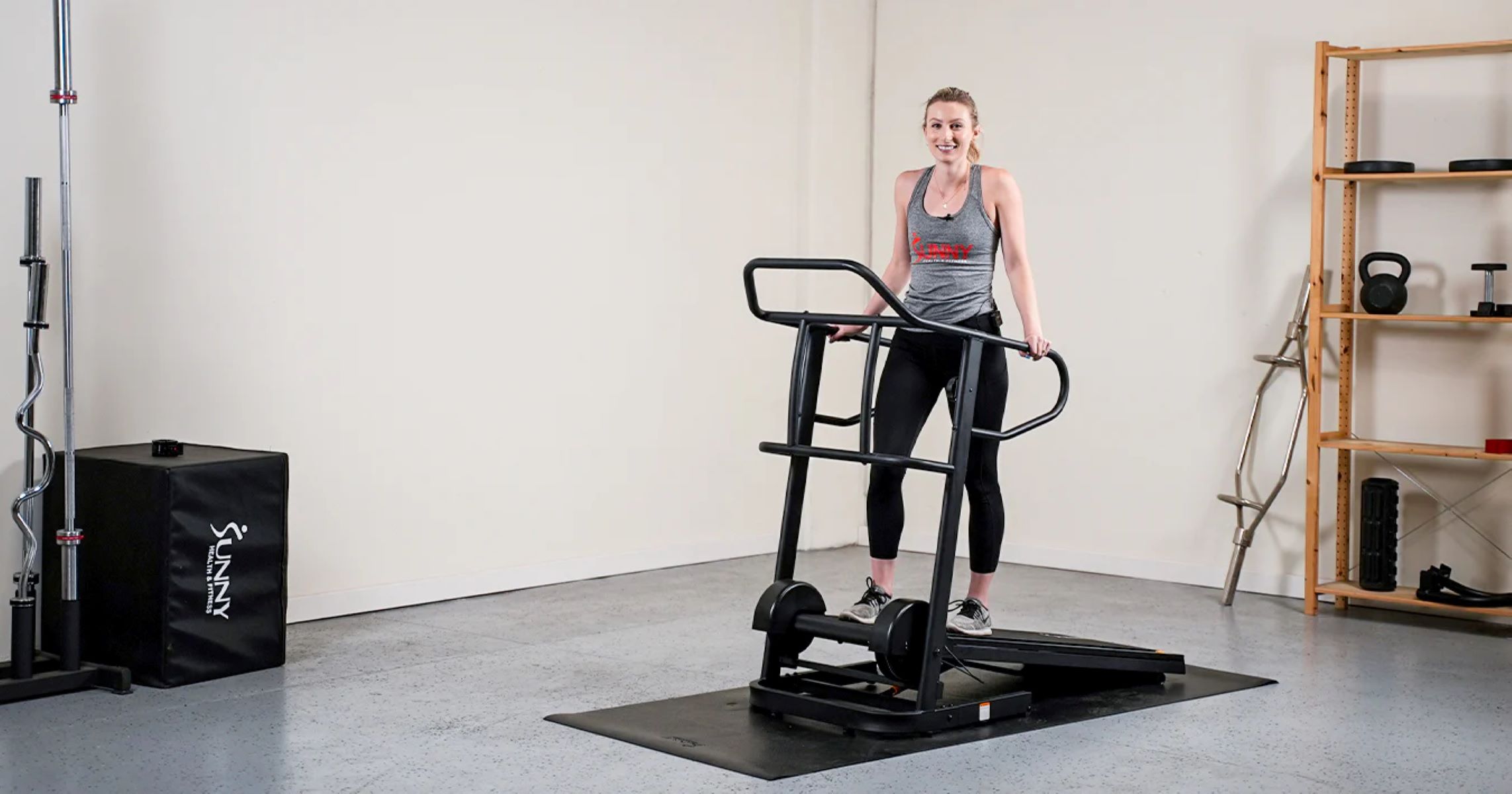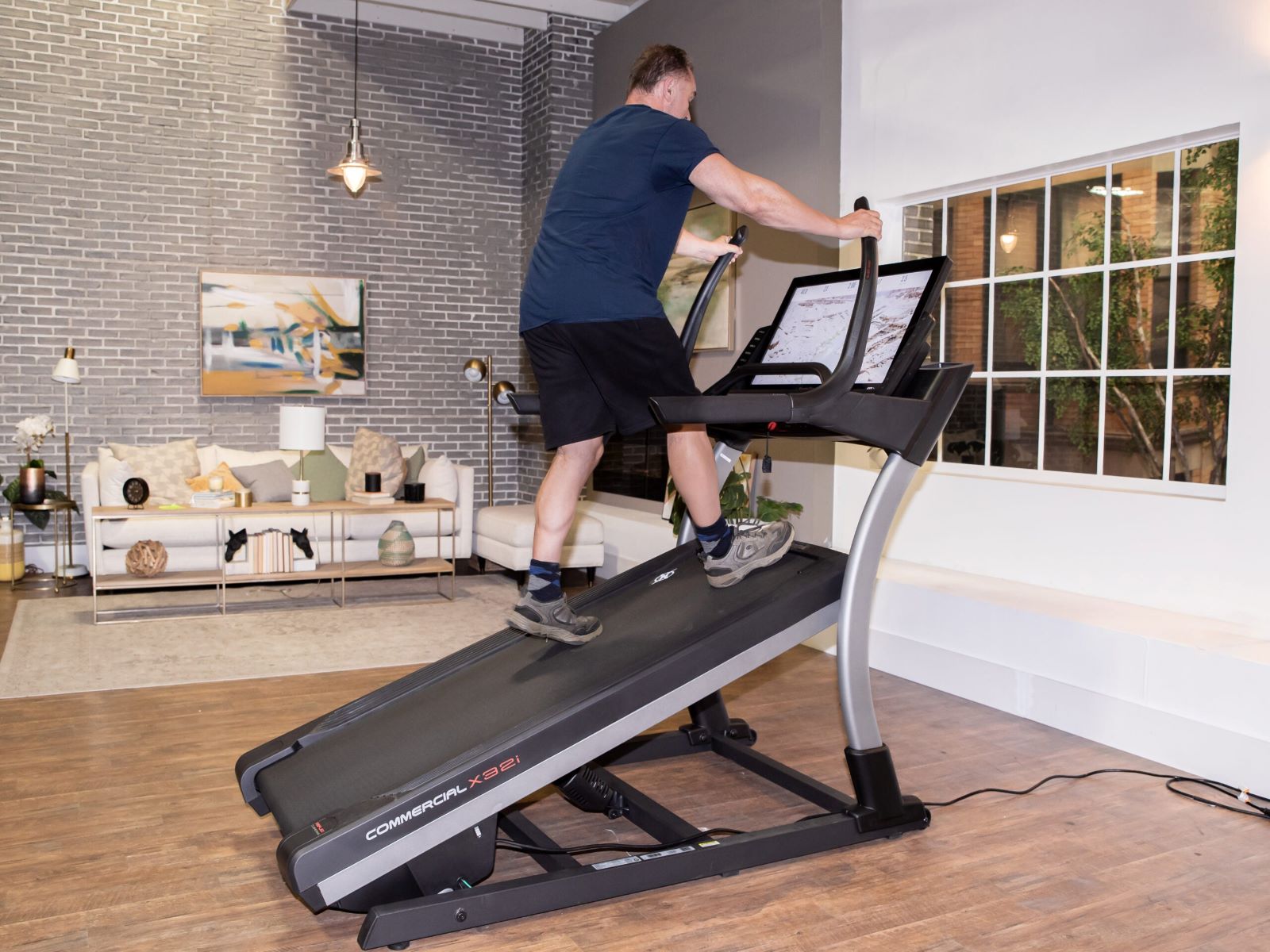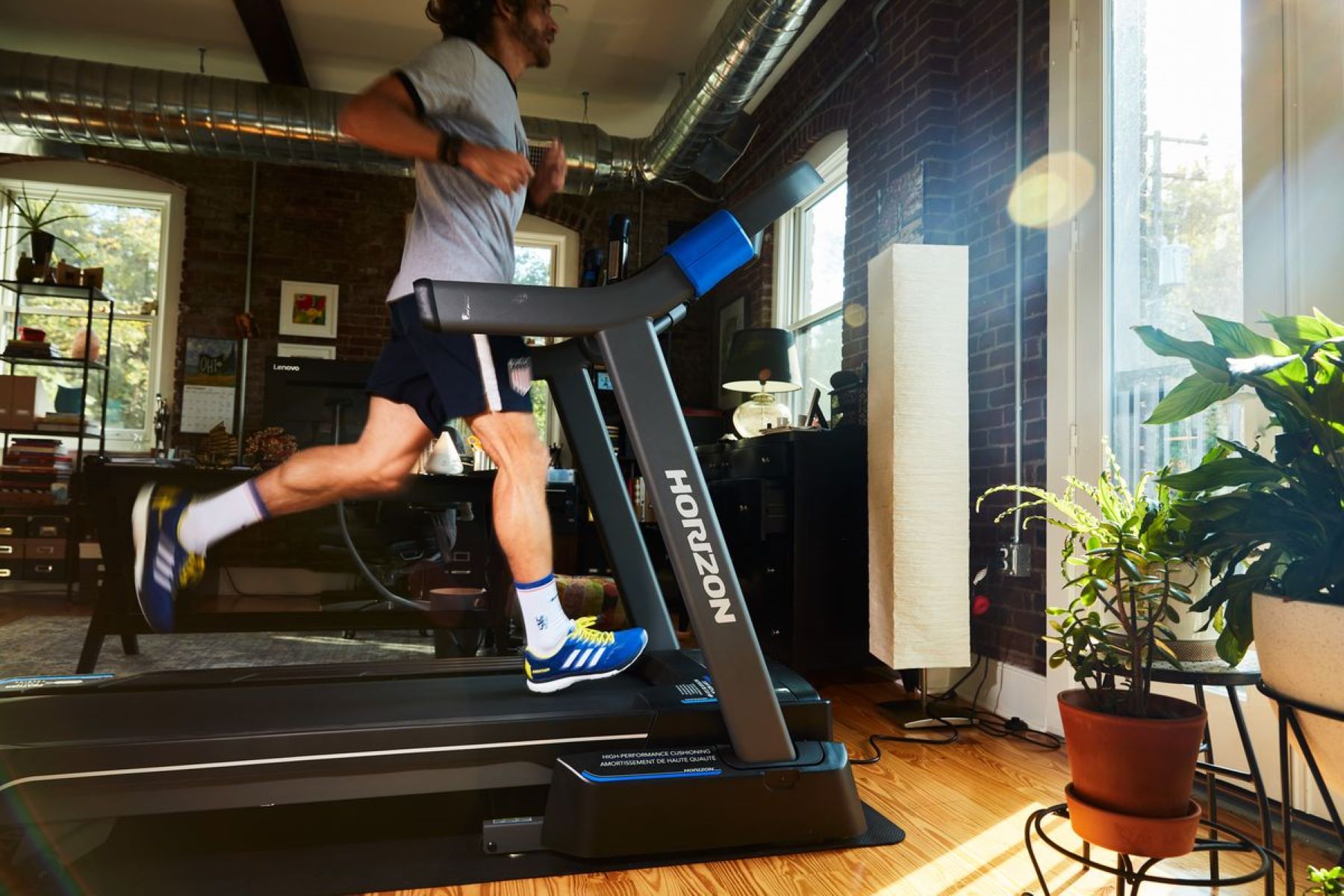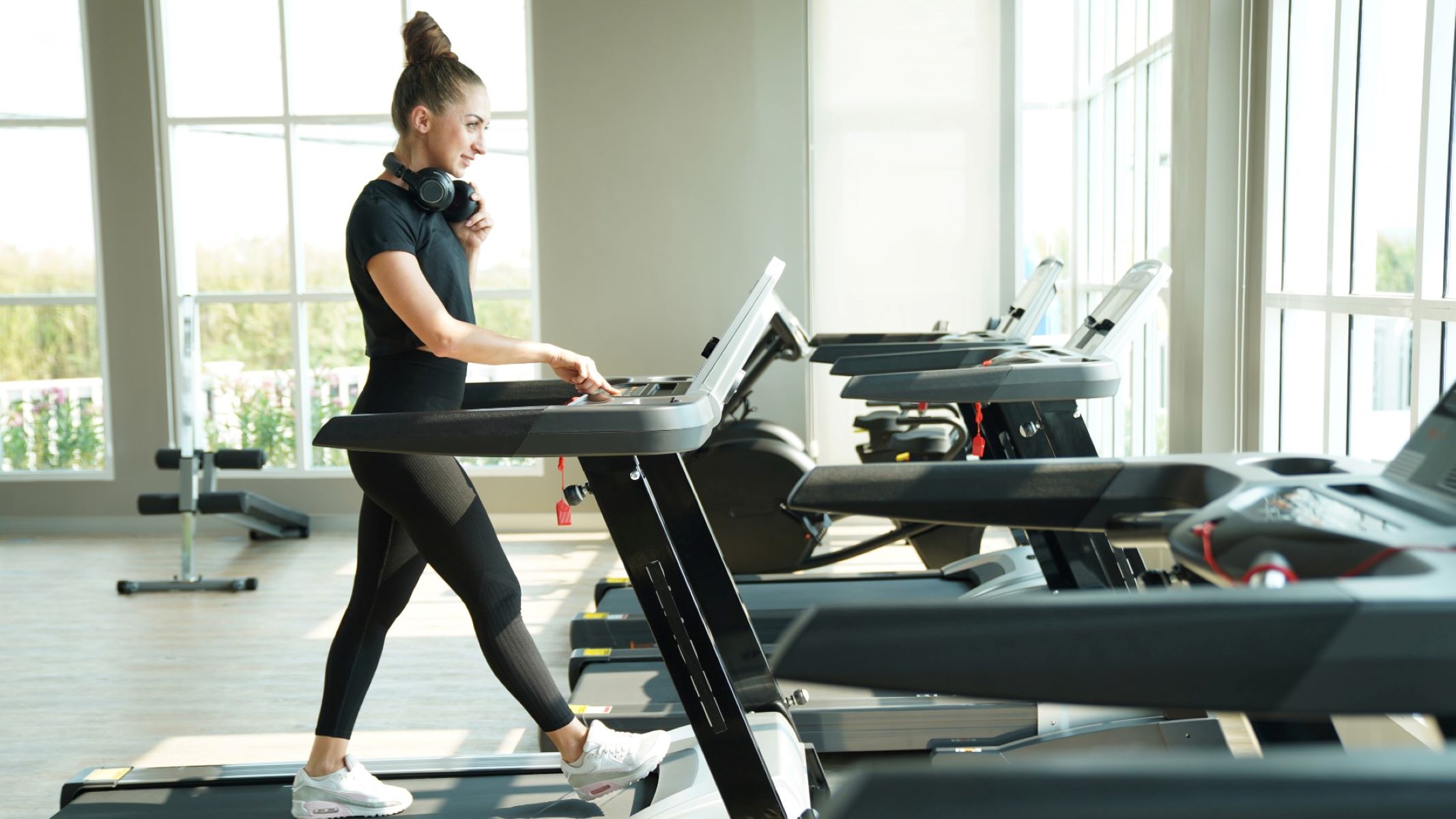Home>Misc>Featured>What Incline Should I Walk On A Treadmill


Featured
What Incline Should I Walk On A Treadmill
Modified: August 19, 2023
Find out the ideal incline for walking on a treadmill in order to maximize your workout results. Get expert tips and advice on fitness from our featured article.
Introduction
Walking on a treadmill is a popular form of exercise that allows individuals to maintain a consistent workout routine regardless of the weather or time constraints. While walking at a steady pace on a flat surface can provide a great cardiovascular workout, incorporating incline into your treadmill workout can take your fitness journey to new heights.
Choosing the right incline level on a treadmill is essential to maximize the benefits of your workout and achieve your fitness goals. Whether you’re a beginner, intermediate, or advanced treadmill user, understanding the different incline options available and their impact on your workout is crucial.
In this article, we’ll explore the importance of selecting the appropriate incline for your treadmill workout, factors to consider when choosing the incline, and the benefits and potential risks associated with walking on an incline. By the end, you’ll have a comprehensive understanding of how incline can enhance your treadmill workouts and improve your overall fitness.
Importance of Choosing the Right Incline
When it comes to using a treadmill, the incline setting is not just a fancy feature – it plays a vital role in the effectiveness of your workout. The incline simulates the natural resistance you would encounter while walking or running uphill outdoors, making your workout more challenging and engaging. Here’s why choosing the right incline is so important:
1. Increased calorie burn: Walking on an incline requires more effort from your muscles compared to walking on a flat surface. This increased effort leads to a higher calorie burn during your workout, helping you achieve your weight loss or weight management goals more effectively.
2. Boosted cardiovascular endurance: Walking on an incline elevates your heart rate as your body works harder to overcome the resistance. This improves cardiovascular endurance, strengthens your heart, and can even lower your risk of heart disease.
3. Targeted muscle engagement: The incline not only challenges your cardiovascular system but also targets specific muscles in your lower body, including your glutes, hamstrings, and calves. By adjusting the incline, you can activate different muscle groups and create a more well-rounded workout.
4. Variation in workout intensity: Incorporating incline into your treadmill routine allows you to vary the intensity of your workout. By adjusting the incline, you can increase or decrease the difficulty level, keeping your body challenged and preventing your workout from becoming monotonous.
5. Real-life simulation: If you’re training for outdoor activities like hiking or running on hilly terrain, using an incline on the treadmill is a great way to prepare your body for those challenges. It helps to mimic the inclines and declines you would encounter during outdoor activities and prepares your muscles and joints for the demands of those movements.
By understanding the importance of choosing the right incline on a treadmill, you can tailor your workouts to meet your specific goals and make the most of your time on the machine. Whether you’re looking to burn calories, improve endurance, or target specific muscle groups, adjusting the incline can help you achieve those objectives effectively.
Factors to Consider When Choosing the Incline
Choosing the right incline level on a treadmill requires thoughtful consideration, as it can significantly impact the effectiveness and safety of your workout. Here are some key factors to keep in mind when deciding on the incline:
1. Fitness level: Your current fitness level should be the primary consideration when choosing the incline. If you’re a beginner, start with a low incline, such as 1-2%, and gradually increase it as your fitness improves. Intermediate and advanced individuals can handle higher inclines, but it’s essential to listen to your body and not exceed your capabilities.
2. Workout goals: Your specific workout goals will determine the incline level that’s most suitable for you. If your focus is on burning calories, aim for higher inclines to boost the intensity of your workout. For muscle targeting, consider adjusting the incline to engage specific muscle groups, such as increasing the incline for glute activation.
3. Impact on joints: Walking on an incline puts additional stress on your joints, particularly in the knees and ankles. If you have any existing joint issues or are recovering from an injury, it’s crucial to choose a comfortable incline that doesn’t worsen the discomfort or strain your joints further.
4. Duration of the workout: Longer workout sessions may require lower incline levels to ensure you can sustain the intensity without fatiguing too quickly. If you’re planning a shorter, more intense workout, you can increase the incline to challenge yourself and maximize the calorie burn.
5. Personal preference: Lastly, don’t underestimate the power of personal preference. Some individuals enjoy the feeling of walking or running uphill and thrive on the challenge, while others prefer a flatter surface. Experiment with different inclines to find what feels most enjoyable and effective for you.
Consider these factors as guidelines when selecting the incline level on your treadmill. It’s essential to find the right balance between pushing yourself outside your comfort zone and maintaining a safe and enjoyable workout experience. Consulting with a fitness professional can also provide valuable insights tailored to your specific needs and goals.
Beginner Incline Levels
If you’re new to using a treadmill or just starting your fitness journey, it’s important to ease into using incline gradually. Beginner incline levels provide a moderate challenge while still allowing you to build endurance and adjust to the changes in intensity. Here are some recommended incline levels for beginners:
1-2% incline: This is an excellent starting point for beginners. It adds a slight resistance to your workout, engaging your muscles and increasing calorie burn without overwhelming your cardiovascular system.
3-4% incline: Once you feel comfortable with a 1-2% incline, you can gradually increase it to 3-4%. This incline level offers a more noticeable challenge, making your workout more intense and helping you build stamina.
5-6% incline: As you continue to progress, consider incorporating a 5-6% incline into your routine. At this level, you’ll start to feel more resistance and engage your lower body muscles more intensely.
Remember, it’s essential to listen to your body and adjust the incline levels based on your comfort and fitness level. Don’t push yourself too hard or jump to higher inclines before you’re ready. Slow and steady progress is key to avoid injuries and make consistent improvements.
Beginner incline levels offer a solid foundation for your fitness journey, providing a challenging yet manageable workout. As you become more comfortable with these incline levels and build your endurance, you can gradually move on to more intermediate and advanced incline levels to continue pushing yourself and achieving your goals.
Intermediate Incline Levels
As you progress in your fitness journey and become more comfortable with incline training, it’s time to challenge yourself with intermediate incline levels on the treadmill. These inclines provide a more substantial resistance and intensity to your workout, pushing your cardiovascular endurance and muscle engagement to the next level. Here are some recommended intermediate incline levels:
7-8% incline: Start by increasing the incline to 7-8%. This level will significantly engage your lower body muscles, including your glutes, hamstrings, and calves, while providing an intense cardiovascular workout.
9-10% incline: Once you feel sufficiently comfortable with the 7-8% incline, slowly progress to the 9-10% range. This level will challenge your endurance, increase your calorie burn, and further strengthen your lower body muscles.
11-12% incline: For individuals seeking an even greater challenge, the 11-12% incline range will push your limits and further enhance your fitness. This incline level simulates steep hills and will require significant effort and determination to conquer.
Remember to adjust the incline based on your fitness level and capability. Listen to your body and don’t hesitate to modify the incline levels as needed. It’s important to find the right balance between challenge and safety to prevent any injuries or strain.
Intermediate incline levels offer a significant boost to your treadmill workouts, providing a higher intensity and targeting specific muscle groups. As your fitness continues to improve, exploring these incline levels will help you reach your goals and continue progressing towards more advanced incline training.
Advanced Incline Levels
If you’re an experienced treadmill user looking for an intense challenge and maximum calorie burn, advanced incline levels are for you. These inclines simulate steep hills and require significant effort and endurance to conquer. Here are some recommended advanced incline levels:
13-15% incline: Start by gradually increasing the incline to 13-15%. At this level, your muscles will be put to the test, and your cardiovascular system will work overtime. Walking or running at this incline will burn a substantial number of calories while sculpting and strengthening your lower body.
16-18% incline: As you become accustomed to the 13-15% incline, challenge yourself even further by increasing the incline to 16-18%. This level requires exceptional lower body strength and endurance and will help improve your overall fitness and athletic performance.
19-20% incline: For the most advanced treadmill users or those training for hilly terrains, the 19-20% incline range will push your limits to the extreme. Walking or running at this incline is no easy feat and should only be attempted by individuals with a high fitness level and no pre-existing injuries or conditions.
Remember that advanced incline levels should be approached with caution and only when you are fully prepared. It’s crucial to maintain proper form, listen to your body, and stay hydrated during these challenging workouts. If at any point you feel discomfort or excessive strain, scale back the incline or take a break to prevent injury.
Advanced incline levels provide the ultimate challenge for those seeking to push their limits and achieve exceptional results. However, always prioritize safety and know your limits – not everyone will be able to handle the highest incline levels, and that’s completely fine. Adjust the incline according to your fitness level and capabilities, and enjoy the benefits of taking your treadmill workouts to the next level.
Walking on a Flat Surface vs. Walking on an Incline
The choice between walking on a flat surface and walking on an incline can have a significant impact on the outcome of your workout and the benefits you receive. Let’s compare the two:
Walking on a Flat Surface:
- Less intensity: Walking on a flat surface requires less effort compared to walking on an incline. It is a good option for beginners or those looking for a low-impact workout.
- Lower calorie burn: Walking on a flat surface typically burns fewer calories compared to walking on an incline at the same speed and distance.
- Engagement of different muscles: While walking on a flat surface primarily targets your lower body muscles, it still provides a comprehensive workout for your legs, hips, and core.
- Less impact on joints: Walking on a flat surface puts less strain on your joints, making it a suitable choice for individuals with joint issues or those recovering from injuries.
Walking on an Incline:
- Higher intensity: Walking on an incline immediately increases the intensity of your workout, engaging more muscles and increasing the demands on your cardiovascular system.
- Increased calorie burn: Walking on an incline requires more energy expenditure compared to walking on a flat surface, leading to a higher calorie burn during your workout.
- Targeted muscle engagement: Walking on an incline specifically targets your glutes, hamstrings, and calves, providing a more effective lower body workout compared to walking on a flat surface.
- Improved cardiovascular endurance: The resistance provided by the incline challenges your cardiovascular system, improving your endurance, and strengthening your heart and lungs.
- Mimics real-life conditions: Walking on an incline simulates the natural resistance you would encounter while traversing hills or hiking on uneven terrain, preparing your body for outdoor activities.
Both walking on a flat surface and walking on an incline have their benefits and serve different purposes. A flat surface is suitable for low-impact workouts, beginners, and individuals with joint issues. On the other hand, walking on an incline offers a more intense workout, targets specific muscle groups, and provides cardiovascular benefits.
To maximize the benefits, you can incorporate both walking on a flat surface and walking on an incline into your fitness routine. Alternating between the two can provide variety, challenge your body in different ways, and help you achieve your fitness goals more effectively.
Benefits of Walking on an Incline
Walking on an incline offers a myriad of benefits that can enhance your fitness routine and improve your overall health. Whether you’re a beginner or an experienced treadmill user, here are some significant benefits of incorporating incline into your walking workouts:
1. Increased calorie burn: Walking on an incline requires more effort from your muscles, resulting in a higher calorie burn compared to walking on a flat surface. This can aid in weight loss or weight management goals.
2. Cardiovascular workout: Walking on an incline elevates your heart rate and challenges your cardiovascular endurance. This helps strengthen your heart, improve lung capacity, and lower the risk of cardiovascular diseases.
3. Muscle toning: The incline targets and engages specific muscle groups, such as the glutes, hamstrings, and calves. Walking uphill helps shape and strengthen these muscles, leading to improved lower body strength and definition.
4. Bone density improvement: Walking on an incline puts load-bearing stress on your bones, which helps stimulate bone growth and can contribute to improved bone density.
5. Boost to metabolism: The higher intensity of walking on an incline can elevate your metabolic rate, allowing you to burn calories at a higher rate even after your workout is over.
6. Improved balance and stability: Walking on an incline challenges your balance and stability, helping to strengthen your core and lower body muscles that are essential for stability and preventing falls.
7. Reduced joint impact: While incline walking can be more intense, it puts less stress on your joints compared to running or jogging. This makes it a suitable option for individuals with joint issues or those recovering from injuries.
8. Variety and mental stimulation: Walking on an incline adds variety to your workout routine and keeps your mind engaged. The change in terrain and increased difficulty can help prevent boredom and make your workouts more enjoyable.
9. Simulates outdoor conditions: If you enjoy outdoor activities like hiking or trail running, walking on an incline can help prepare your body for those challenges by simulating uphill terrain and mimicking the resistance you would encounter outdoors.
With its numerous benefits, walking on an incline can significantly enhance your fitness journey and help you achieve your health and wellness goals. It provides a challenging and effective workout that targets specific muscle groups, improves cardiovascular endurance, and helps you burn more calories. So, lace up your shoes, adjust that incline, and take your walking workouts to new heights!
Potential Risks and Precautions
While walking on an incline can offer numerous benefits, it’s important to be aware of the potential risks and take appropriate precautions to ensure a safe and effective workout. Here are some key considerations:
1. Joint stress: Walking on an incline puts increased stress on your joints, particularly in the knees and ankles. Individuals with pre-existing joint conditions or injuries should consult their healthcare provider before incorporating incline walking into their routine. It’s crucial to listen to your body and modify the incline or intensity if you experience any pain or discomfort.
2. Proper form: Maintaining proper form is essential to prevent injuries while walking on an incline. Keep your head up, shoulders back, and engage your core muscles. Avoid leaning too far forward or backward, as this can strain your back and compromise your balance.
3. Warm-up and cool-down: Before starting an incline walking workout, it’s crucial to warm up your body with dynamic stretches and light exercises to increase blood flow to your muscles and prepare them for the increased intensity. Similarly, a proper cool-down routine, including static stretches, helps prevent muscle tightness and aids in recovery.
4. Gradual progression: Gradually increase the incline over time as your fitness level improves. Jumping to a high incline too quickly can put excessive strain on your muscles and joints, leading to injuries. Allow your body to adapt to each level before progressing to the next.
5. Hydration: Incline walking can be more demanding and lead to increased sweating. It’s important to stay hydrated before, during, and after your workout. Bring a water bottle and take regular sips to avoid dehydration.
6. Use of handrails: While it can be tempting to hold onto the handrails for balance, it’s best to avoid relying on them too heavily. Holding onto the handrails can alter your natural walking form and decrease the effectiveness of your workout. Maintain a natural arm swing and only use the handrails for support when absolutely necessary.
7. Individual considerations: Everyone’s fitness level and capabilities are different. It’s important to assess your own limitations and adjust the incline and intensity accordingly. If you have any concerns or medical conditions, consult with a healthcare professional before starting an incline walking routine.
By taking these precautions and listening to your body, you can minimize the risks associated with incline walking and enjoy a safe and effective workout. Remember to start slow, gradually progress, and always prioritize your safety and well-being during your fitness journey.
Conclusion
Incorporating incline into your treadmill workouts can take your fitness journey to new heights. By choosing the right incline level, you can maximize the benefits of your workout, including increased calorie burn, improved cardiovascular endurance, targeted muscle engagement, and enhanced overall fitness.
When selecting the incline, consider factors such as your fitness level, workout goals, impact on joints, duration of the workout, and personal preferences. By keeping these factors in mind, you can tailor your incline workouts to your specific needs and gradually progress to more challenging levels as your fitness improves.
Walking on a flat surface offers a low-impact workout, while walking on an incline provides a more intense workout that activates specific muscle groups and simulates real-life conditions. Balancing between both options can offer variety, target different muscle groups, and prevent boredom.
While there are numerous benefits to walking on an incline, it’s important to be aware of potential risks and take appropriate precautions. Maintaining proper form, warming up and cooling down, gradually progressing, staying hydrated, and listening to your body are all essential for a safe and effective incline walking session.
Incline walking is an excellent way to challenge yourself, achieve your fitness goals, and improve your overall health. So, lace up your shoes, adjust that incline, and embark on a rewarding journey of incline walking that will take your treadmill workouts to new levels of intensity, endurance, and muscle engagement.

